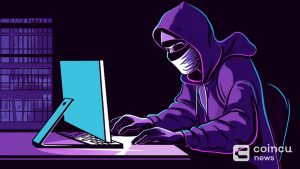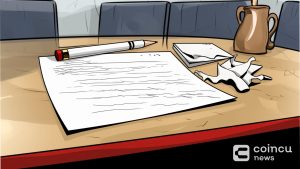Can the connection between DAOs and NFTs accelerate the adoption of Web3?
Imagine a world that is not controlled by indoor meetings and lobbying behind the scenes, but rather controlled by distributed governance over open source networks. Blockchain-based Decentralized Autonomous Organizations (DAOs) aim to achieve this vision by creating platforms that replace traditional decentralized systems and are managed by token holders.
Essentially, DAOs are completely internet-based organizations that lack centralized leadership and are instead powered by on-chain rules backed up in a smart contract. This allows the bottom-up decision-making process to reach consensus through voting. In this section, cryptocurrencies come into play and act as governance tokens that allow holders to participate in all major decisions.
While it sounds like a trending buzzword fueled by the craze of Web3, DAOs have actually been around for years. During that time, they managed to capture a significant chunk of the crypto industry, and many popular DeFi projects like UniSwap are actually managed by the DAO.
They fit in perfectly with the decentralized internet utopia that web3 enthusiasts envision. One in which there is no central caretaker and promotes collective ownership.
Creation of the creative industries
The DAO’s vision of a property-based economy is also shared by the non-fungible token cult (NFT) that the DAO preceded this year as the “next big thing” in cryptocurrency. This can be proven by the fact that Google broke the same trend record and was named Word of the Year in the Collins Dictionary.
While NFT’s sales volume rose to $ 2.5 billion in the first half of 2021, users deposited cryptocurrencies worth at least $ 26.9 billion for Ethereum-related contracts in early December. Archives, digital animals, music, memes, and even tweets are encrypted and sold for millions of dollars while providing a virtual marketplace for artists and creators all in one. The world is gradually turning to digitization.

Source: chain analysis
While its popularity this year has certainly been fueled by mysterious art collections like the Bored Apes Yacht Club and CryptoKitties and marketplaces like OpenSea which facilitate most of the traffic, the main benefit of NFT lies in its ability to provide public and secure evidence of the Sole ownership.
What does NFT have to do with it?
In the end, several DAOs were formed with the sole purpose of buying NFTs and amassing large tills to make notable transactions like buying a rare Wu Tang Clan CD for $ 4 million. Another person even tried unsuccessfully to buy a rare copy of the U.S. Constitution by raising $ 20 million at ETH.
While it is difficult to argue who is behind whom, the NFT and DAO have now evolved into a symbiotic relationship. One that will trigger growth in both sectors. But how do DAOs help with the control and development of NFTs? And can both secure a place on the Web3?
To answer this question, one has to consider how both entities are connected and how their ecosystems develop together.
While NFTs are digital assets, DAOs are ways to manage organizations through encryption. While artists can convert their creations into blockchain-based assets for security and verifiability, DAOs help with the joint management and ownership of the assets. DAOs also help potential creators form communities that help with crowdfunding, investing, support, and marketing that can be fueled by future returns.
Promote the development of public property
To do this, the creators would have to sell their NFT to the DAO, which would then mine a currency and exchange it for collective or partial ownership of the NFT. While the NFT will act as a supporting asset for the DAO’s currency and add value to it, possession of tokens will ensure that DAO members have a say in governance.
You can then vote on the fate of the NFT and also benefit from the possible price increase of the token. Both the NFT and the token that it will act as collateral can appreciate in value due to the uniqueness of the NFT, its non-interchangeability and its scarcity.
In addition to helping small artists, DAOs can also provide a channel to invest in top notch NFT projects that would otherwise require millions of dollars. One such project that works on this model is PleasrDAO, which claims to be a collective of “DeFi executives, early NFT collectors, and digital artists” raising funds to buy high quality NFTs made by DAO members are paid for and are owned by DAO. or token holder.
FIVE POINTS FIVE MILLION WORDS @PleasrDAO. It feels like all the staff come from @Press Freedom Watched live and we’ve never seen anything like it. This is not just a spectacle – it’s a television series. All eyes were on the black horse. https://t.co/GOcrOiraXS
– Edward Snowden (@Snowden) April 16, 2021
Likewise, is FlamingoDAO, which aims to “explore emerging investment opportunities for blockchain-based proprietary assets” by allowing members to develop and implement investment strategies. The protocol strengthens NFT’s position in DeFi and also allows members to vote to split up their NFT holdings for borrowing or use as collateral in other DeFi platforms.
Another DAO even took a long try to buy the Chicago Bulls basketball team. The DAO sold NFT to act as a ticket for the Discord servers and their governance token. The aim of the project is to transfer ownership of sports teams from billionaires to die-hard fans. House Krause has completed its NFT sale last month after raising 1000 ETH worth over $ 4 million.
Like sport, music is another important niche in the NFT sector, where many artists big and small are turning their tunes into unique digital assets. MODA DAO went a step further by using these digital tokens as a governance tool for artists and their curators to control licensing agreements. .
This enables the elimination of the middlemen found in traditional streaming services. Protocol recently closed a round of funding of around $ 5 million with contributions from top artists such as Deadmau5 and Richie Hawtin.
Collective gain = collective loss
While heightened awareness and aggressive regulatory measures surrounding DAOs have certainly increased their adoption, a major hurdle remains in the form of security threats. The same thing was found in the recent BadgerDAO protocol exploit. It cost investors about $ 120 million.
In fact, one of the first DAOs, simply called The DAO, served as a risk fund for the crypto and decentralized space. Instead, it was hacked at around $ 70 million, or 15% of the total ETH supply at the time, resulting in a massive hard fork on the Ethereum network.
Obviously, exploitable bugs make a DAO hack especially difficult for investors who are already involved in raising large sums of money. These concerns are compounded by the persistence of smart contracts and the risk of large numbers of investors in control.
Please ignore intermediaries!
Despite these disadvantages, the DAO-NFT duo certainly contributed to the birth of the new creative industries. One that is based on both collective and sole ownership, allowing greater involvement and interaction between creators and owners while eliminating the need for centralized profitable middlemen.
As the world prepares for the transition to a new phase of the Internet, such ownership structures will ensure that all levels of investors can participate in the creation and operation of the Internet.
To protect their programming and engineering needs from being an obstacle to adoption, projects like the UpStream Collective have also emerged to simplify the creation of DAOs and ensure that their Web3 visibility is not yet implemented.





















